
"The Black Cat" is a short story by American writer Edgar Allan Poe. It was first published in the August 19, 1843, edition of The Saturday Evening Post. In the story, an unnamed narrator has a strong affection for pets until he perversely turns to abusing them. His favorite, a pet black cat, bites him one night and the narrator punishes it by cutting its eye out and then hanging it from a tree. The home burns down but one remaining wall shows a burned outline of a cat hanging from a noose. He soon finds another black cat, similar to the first except for a white mark on its chest, but he develops a hatred for it as well. He attempts to kill the cat with an axe but his wife stops him; instead, the narrator murders his wife. He conceals the body behind a brick wall in his basement. The police soon come and, after the narrator's tapping on the wall is met with a shrieking sound, they find not only the wife's corpse but also the black cat that had been accidentally walled in with the body and alerted them with its cry.
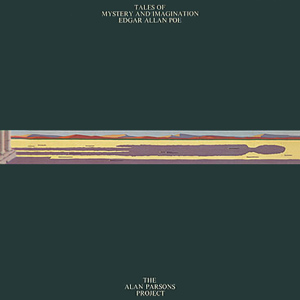
Tales of Mystery and Imagination (Edgar Allan Poe) is the debut studio album by British rock band the Alan Parsons Project. It was released on 25 June 1976 in the United Kingdom by Charisma Records. The lyrical and musical themes of the album, which are retellings of horror stories and poetry by Edgar Allan Poe, attracted a cult audience. The title of the album is taken from the title of a collection of Poe's macabre stories of the same name.

The Black Cat is a 1934 American pre-Code horror film directed by Edgar G. Ulmer and starring Boris Karloff and Béla Lugosi. It was Universal Pictures' biggest box office hit of the year, and was the first of eight films to feature both Karloff and Lugosi. In 1941, Lugosi appeared in a comedy horror mystery film with the same title, which was also named after and ostensibly "suggested by" Edgar Allan Poe's short story.
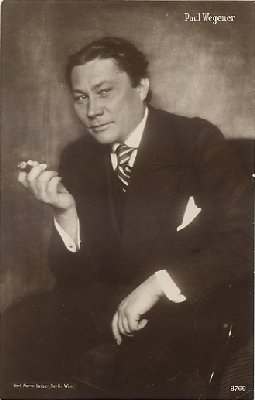
Paul Wegener was a German actor, writer, and film director known for his pioneering role in German expressionist cinema.
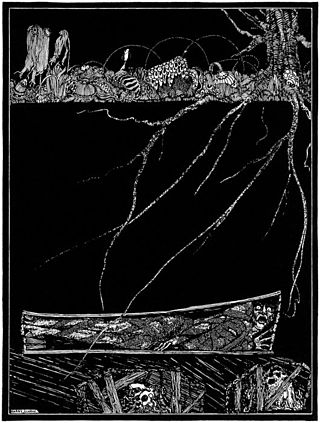
"The Premature Burial" is a horror short story by American writer Edgar Allan Poe, published in 1844 in The Philadelphia Dollar Newspaper. Its main character expresses concern about being buried alive. This fear was common in this period and Poe was taking advantage of the public interest. The story has been adapted to a film.

Richard Oswald was an Austrian film director, producer, screenwriter, and father of German-American film director Gerd Oswald.

Murders in the Rue Morgue is a 1932 American horror film directed by Robert Florey, based on Edgar Allan Poe's 1841 short story "The Murders in the Rue Morgue". The plot is about Doctor Mirakle, a carnival sideshow entertainer and scientist who kidnaps Parisian women to mix their blood with that of his gorilla, Erik. As his experiments fail because of the quality of his victims' blood, Mirakle meets with Camille L'Espanye, and has her kidnapped and her mother murdered, leading to suspicion falling on Camille's fiance, Pierre Dupin, a medical student who has already become interested in the earlier murders.

American poet and short story writer Edgar Allan Poe has had significant influence in television and film. Many are adaptations of Poe's work, others merely reference it.

"The System of Doctor Tarr and Professor Fether" is a dark comedy short story by the American author Edgar Allan Poe. First published in Graham's Magazine in November 1845, the story centers on a naïve and unnamed narrator's visit to a mental asylum in the southern provinces of France.

John Gottowt was an Austrian actor, stage director and film director for theatres and silent movies.

The Suicide Club is a collection of three 19th century detective fiction short stories by Robert Louis Stevenson that combine to form a single narrative. First published in the London Magazine in 1878, they were collected and republished in the first volume of the New Arabian Nights.

Harald Paulsen was a German stage and film actor and director. He appeared in 125 films between 1920 and 1954.
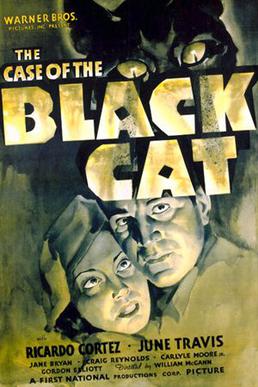
The Case of the Black Cat is a 1936 American mystery film directed by William C. McGann and an uncredited Alan Crosland, based on the 1935 Perry Mason novel The Case of the Caretaker's Cat by Erle Stanley Gardner. The film stars Ricardo Cortez as Perry Mason and co-stars June Travis and Jane Bryan in her film debut. The film is the fifth Perry Mason adaptation distributed by Warner Bros. Pictures in the 1930s and the first in the series not to feature Warren William as Mason.
Carl Heinz Carrell was a German stage and film actor.
Figures of the Night (German:Nachtgestalten) is a 1920 German silent horror film written, directed and produced by Richard Oswald and starring Paul Wegener, Conrad Veidt, Reinhold Schünzel and Erna Morena. It is based on the novel Eleagabal Kuperus by Karl Hans Strobl. Strobl was the editor of a German horror fiction magazine called Der Orchideengarten which was said to have been influenced by the works of Edgar Allan Poe. Strobl was an anti-Semitic and later willingly joined the Nazi Party, which may explain why he has become an obscure literary figure today.
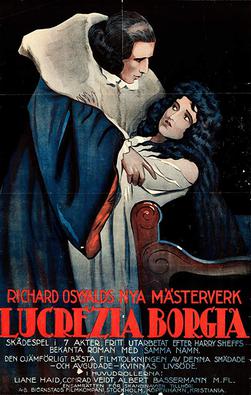
Lucrezia Borgia is a 1922 German silent historical film directed by Richard Oswald and starring Conrad Veidt, Liane Haid, Paul Wegener, and Albert Bassermann. It was based on a novel by Harry Sheff, and portrayed the life of the Renaissance Italian aristocrat Lucrezia Borgia (1480–1519). Botho Hoefer and Robert Neppach worked as the film's art directors, designing the period sets needed. It was shot at the Tempelhof Studios in Berlin. Karl Freund was one of the cinematographers. Famed French director Abel Gance remade the film in 1935.

The Strange Case of Captain Ramper is a 1927 German silent film directed by Max Reichmann and starring Paul Wegener and Mary Johnson.

Unheimliche Geschichten, titled Eerie Tales in English, is a 1919 German silent anthology film directed by Richard Oswald and starring Conrad Veidt. The film is split into five stories: The Apparition, The Hand, The Black Cat, The Suicide Club and Der Spuk.
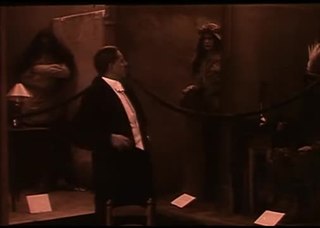
Figures de Cire is a 1914 French short silent horror film directed by Maurice Tourneur. The film stars Henry Roussel, and was based upon the short story of the same name by André de Lorde. De Lorde adapted the story from the stage play he wrote with Georges Montignac, which was first performed in 1912 at the Grand Guignol in Paris.

















